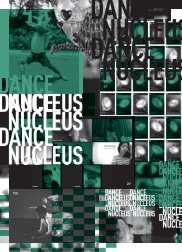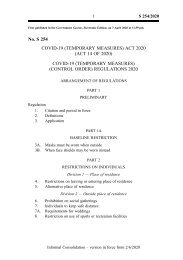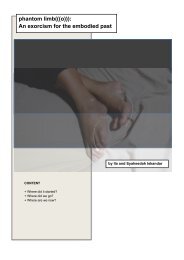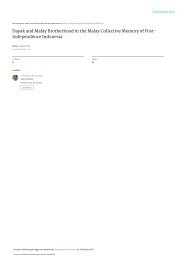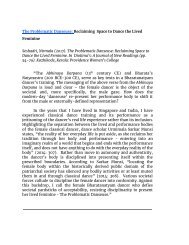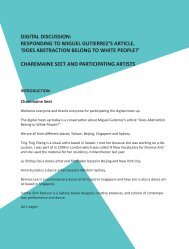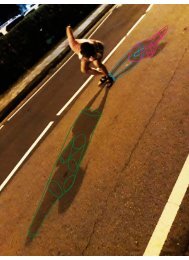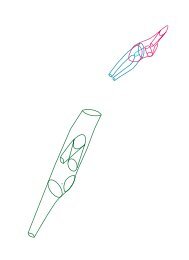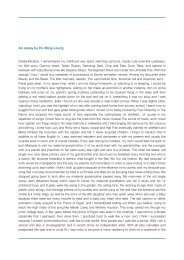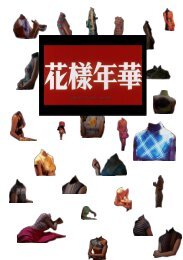FUSE#4
FUSE is a bi-annual publication that documents the projects at Dance Nucleus .
FUSE is a bi-annual publication that documents the projects at Dance Nucleus .
You also want an ePaper? Increase the reach of your titles
YUMPU automatically turns print PDFs into web optimized ePapers that Google loves.
FUSE #4<br />
da:ns LAB<br />
She then shares about the significance of the physicality of a space. How one<br />
response to the way the building is structured, to the “skin” of the rooms,<br />
the definition of the floors, and how that cultivates an organic growth.<br />
Agora has inhabited different spaces. From 2011-2016/17 they were based<br />
in a five-story historic former factory building in Mittelweg, and then from<br />
2017-2019 in the upper and then lower floors of a large industrial warehouse<br />
in Rollberg. Both locations were in Central/South Berlin in Neukölln, a rapidly<br />
gentrifying neighbourhood. She acknowledged that artists too have contributed<br />
to that gentrification. The initial move to the expanded space in Rollberg<br />
prompted the addition of a fifth and missing pillar Play/Move which became<br />
the first dance house for Neukölln. They also planned for an extensive complex<br />
of 26 artist studios. The growth of Agora came in forms of highlighting<br />
sustainability structures which dealt with the binary of a business model and<br />
a non-for-profit structure. With the insistence of trans-disciplinary practices<br />
through their four pillars, the collective produced: a co-working space, an<br />
event series, workshops and programming, community dinners, production<br />
and experimentation, education, a garden. The discursive emphasis was on:<br />
processuality, experimentation, collaboration, interdisciplinary, participation,<br />
community-driven, critical engagement, and artistic solidarity.<br />
On exhaustion and exuberance,<br />
Throughout the years, Agora would review ways of collectively approaching<br />
work through vast curriculums of artists working collaboratively and using art<br />
as a relational tool.<br />
Collaborative arts encourages cultural democracy by contesting notions<br />
of authorship and the idea of the artist-genius working in isolation. Work<br />
that is made collaboratively with different groups often exists outside of the<br />
gallery and traditional theatre spaces. Instead it may take place in a prison or<br />
a hospital. It can also be interdisciplinary.<br />
How can we host smaller economics circulating from space for the artists<br />
themselves?<br />
How can we test modes of assembly?<br />
How can we play with architecture and space?<br />
Where does art intersect with the social?<br />
Top, Bottom: The Curriculum — Challenging the conventions around self-development, productivity,<br />
and high-performance. Workshop by Paz Ponce.<br />
Agora shifted their sustainability model from 2016/17-2019 from a dual<br />
structure of co-working business and non for profit cultural association model.<br />
The organization operated as a cultural association, only, entailing shared rent,<br />
space division, external funding, rentals, and Municipal support. The way of<br />
working has always been based on freelancing, now it was heavily based on<br />
77 78




